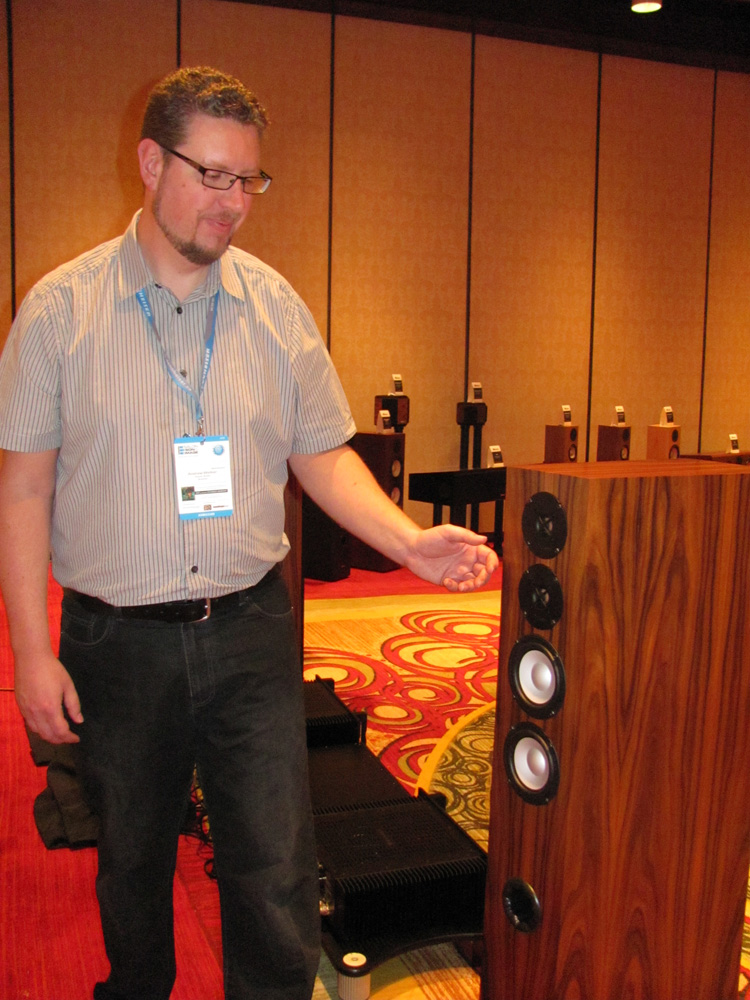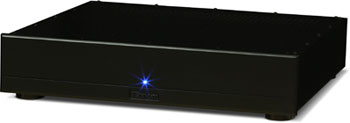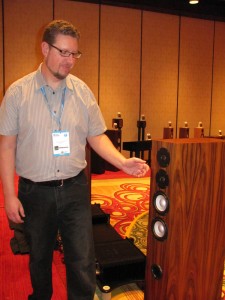
I managed to find a quiet minute with Axiom Audio Engineer Andrew Welker at Montreal's Salon Son Et Image, and asked him to explain to me, in laywoman's terms, why he put drivers on the back of the speaker. Why omnidirectional as opposed to our usual directional speaker?
When you measure a loudspeaker in the anechoic chamber, he explained, you will see a certain frequency response when the front baffle is facing straight-on to the microphone. As you rotate the speaker in degrees - for example, 15 degree increments - the amount of reduction in energy from the tweeter should remain consistent. An angling of x degrees and a reduction of x decibels, as it were.

In a conventional speaker, however, by the time that angle reaches 60- 90 degrees, there is a very rapid reduction in upper midrange and high-frequency energy. So it might appear nice and even to 90 degrees, but as you go further than the 90 degree angle, the highs really begin to disappear. Ideally you'd like for this energy continue reducing in level in an even fashion, but this is nearly impossible to achieve with drivers only on the front of the speaker.
So how to compensate for this problem? Well, the theory is that if you put tweeters and mid-woofers on the back of the cabinet, you can keep the energy consistent across a wider frequency range, increasing the spectrum of sound being radiated throughout the room.
But the challenge has always been that if you put identical drivers front and back, you introduce some nasty cancellations between front and back. If you heard early versions of omnidirectional speakers, you know what we mean.

Enter the DSP. By using a digital signal processing chip, you can code the exact response of the speaker to eliminate these cancellations, and create what we like to call the Axiom Listening Window - smooth frequency response across the family of curves. What that translates to is even energy in the highs and midrange, along with the detail and image focus that Axiom speakers are famous for. Got a home theater with 6 seats across? How about a big sectional couch? Imagine if everyone heard the same wide soundstage that you enjoy in the sweet spot.
The goal of the new Axiom Omnidirectional speaker is to create our most realistic, enveloping speaker to date. Applying the latest developments in DSP technology to a solid foundation of research in loudspeaker design has created a truly unique speaker worthy of being called Axiom's new flagship speaker.







